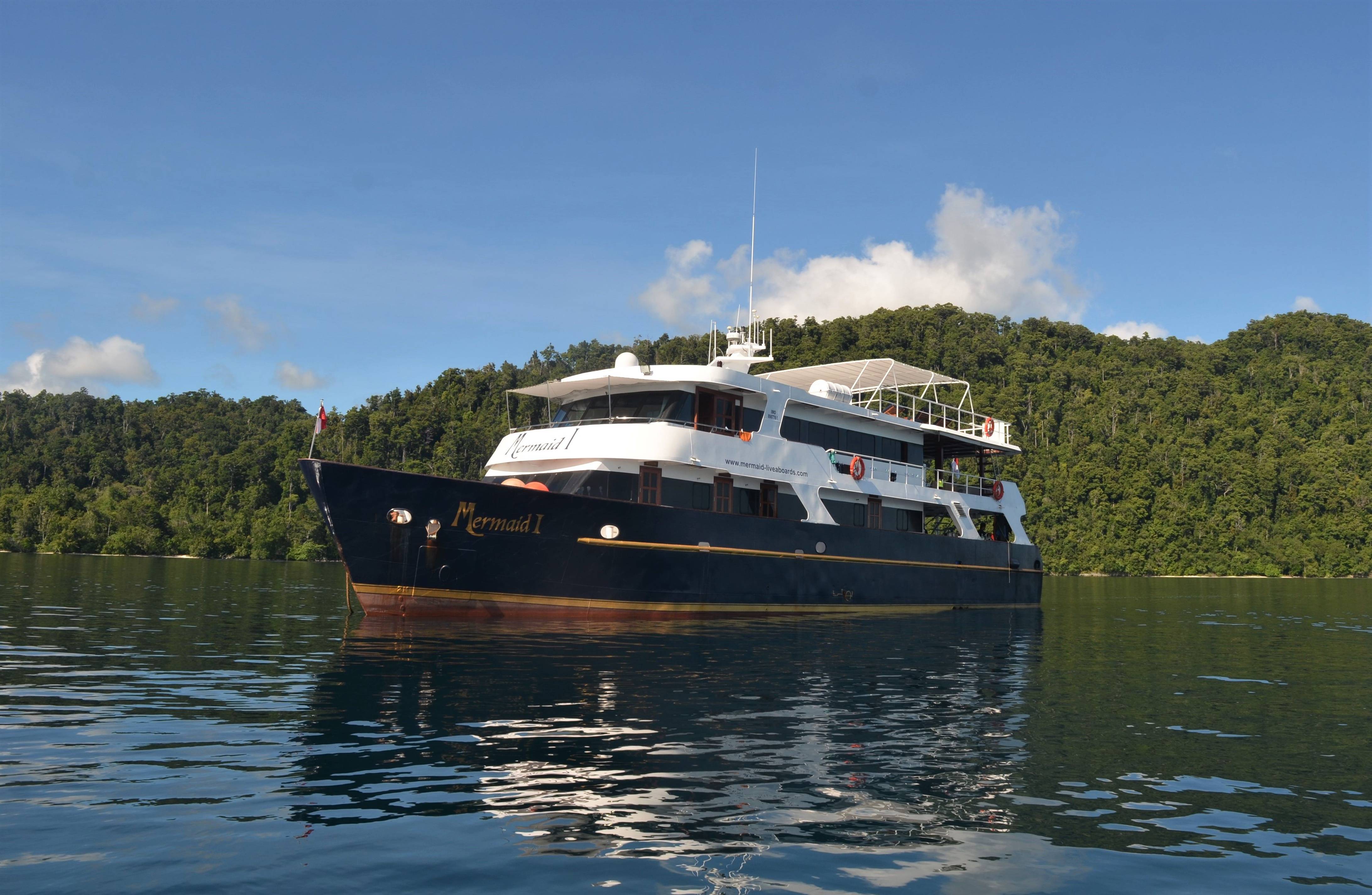
Spice Islands to Raja Ampat – Chasing the Solar Eclipse

Operations Manager & Tour Leader
18th May 2023
To take in April’s total solar eclipse, we altered our standard Raja Ampat holiday to start in the city of Ambon and finish in the West Papuan city of Sorong. This 11-night cruise on board the very comfortable Mermaid 1 was full of extraordinary sights and experiences. Our first landfall was in the historic Banda Islands, a group of islands fought over by European powers in the early 17th century. Here, we were guided around a museum displaying artefacts from the Dutch colonial period, and also the Dutch fort, before visiting a nutmeg plantation to see the trees that produced the spices so desirable in Europe at that time.
During the trip our boat toured part of the ‘coral triangle’, an area of sea noted as being the most biodiverse marine environment on the planet. We snorkelled every day, encountering a huge variety of vibrantly coloured fish and coral.
Manuk, an uninhabited volcanic island south of the Bandas, felt like a tropical version of Bass Rock. Both Red-footed and Brown Boobies were nesting on the cliffs and flying around in number and, beneath the water, we snorkelled over a reef (a highlight of which was two species of sea snake!).
As eclipse day drew close, we moved into position offshore from another small uninhabited island that lay close to the centreline of the eclipse track. The day dawned overcast, and we were concerned that clouds might obscure our view but, with optimism, we took the RIBs across to the island and set up. Luck was with us as the clouds thinned and during the total phase we were able to view extensive solar prominences, the pink of the solar chromosphere and the sun’s outer atmosphere – the corona. The path of totality was very narrow for this eclipse and it was interesting to see the Sun illuminating clouds around the horizon whilst we were in darkness. The island, with its sculptural Pandanus and resident Beach Thick-knees, had proved a good place to see the eclipse – phew!
Sailing northward towards Raja Ampat we encountered a variety of cetaceans including a pod of Melon-headed Whales which swam with us along the bow of the boat. A particularly interesting behaviour was observed when members of a pod of Risso’s Dolphins repeatedly did ‘headstands’, holding their tails up out of the water. It isn’t known why this species exhibit this behaviour; it could be to cool down or it could be just for ‘fun’.
The reefs of Raja Ampat are known for being among the richest anywhere and they certainly did not disappoint! Daily snorkelling excursions gave everyone the opportunity to see huge mantas, starfish, Moray Eels, tunicates, nudibranchs, jellyfish, marine turtles and myriad fish species.
On the island of Waigeo, a very special excursion had been planned to see two species of bird-of-paradise! Starting well before dawn we crossed by boat to a small village where we were collected by vehicles and driven into the forest for half an hour. An uphill walk for a further 20 minutes brought us to the lekking site of the Red Bird-of-paradise. Following intense periods of squawking, the birds (there were at least three) flew into the bare branches of a tree but only stopped briefly before flying off again. Another bird settled on a branch partially obscured by foliage from our vantage point but we could still see it preening. Eventually one male settled for a longer period in full view showing his plumes and long tail wires.
Red Birds-of-paradise display in tall trees and do so very early in the day. However, the Wilson’s Bird-of-paradise displays on the forest floor later in the morning. This meant we could see both species in the same morning. A shorter walk of perhaps 10 minutes brought us to a hide overlooking the Wilson’s Bird-of-paradise display area. In just a few minutes a female was seen before a stunning male turned up. The red of his back, his bright yellow nape and blue crown was such a breathtaking sight.
Crossing to Sorong on the final day brought us close to two baleen whales: the Bryde’s and the Omura’s Whale. In all my travels, I cannot recall a period in which I have seen so many and such diverse highlights as on this trip!



 Loading search...
Loading search...








